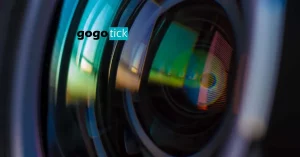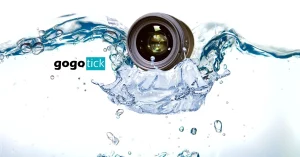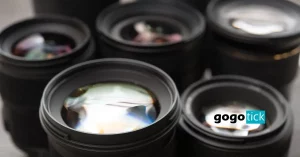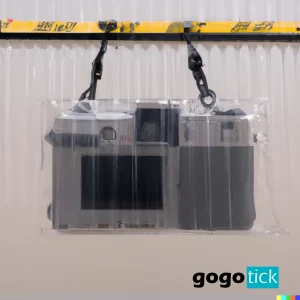Disposable cameras are a great option for traveling, but with all of the rules about what you can and can’t take on a plane, you may wonder if you can bring them along in checked baggage or if should you avoid taking a disposable camera on board by having the photos processed before you even leave your travel destination?
Disposable cameras are allowed on planes, but precautions should be taken to make sure that the film in the camera is not damaged by the airport security checkpoints. X-ray scanning at security gates can damage the unprocessed film and so it is prudent to request a hand search if available.
Whether it is film for a traditional camera or a disposable camera, the main headache when traveling by air is the fact that the x-rays used to scan baggage in security checkpoints can damage the unprocessed film. As such, there are recommendations for how to best pack your camera. Read on below to find out advice for how to best pack your disposable camera, as well as other helpful tips for traveling with film.
If you are one of the disposable film lovers and users here you have some film to digital converters now on sale in amazon
How to Protect a Disposable Camera During Air Travel
According to the TSA, any undeveloped film or cameras that contain undeveloped film, such as disposable cameras, should be placed in carry-on bags or carried to a security checkpoint and searched by a hand inspection. The final decision will rely upon the TSA officer at the checkpoint, but film is generally allowed in both carry-on and checked baggage.
Undeveloped film can be damaged by x-rays as well as the newer CT scanners present in many airports. This means that if you haven’t taken your film to be developed yet, you could potentially lose any photos you have taken when the film passes through the security scanners at airport terminals.
For disposable cameras, the film inside is undeveloped until the moment you drop it off at a shop to be processed. It is important to protect the film, whether you’ve taken all the photos or only a few, by limiting its exposure to the radiation of security checkpoints.
- Undeveloped film should always be placed in carry-on baggage. Checked baggage is subjected to much more intense levels of radiation than carry-on screening, and packing the film in your carry-on also allows you to request a hand inspection if available.
- Keep in mind that if you are traveling through multiple airport terminals, your packed camera may be scanned several times. The more scans your undeveloped film endures, the higher likelihood the film will be ruined.
- Try to limit the amount of exposure by having the film hand-inspected whenever possibleb>. Some foreign airports may not offer this, so it is best to take advantage of it when available to reduce the risk of damaging your film.
How to Pass Through Airport Security with Undeveloped Film
Packing your undeveloped film or disposable camera in your carry-on is generally considered the best option when traveling by air, but the safest course is to avoid having your film scanned at all. With a little bit of preparation, you can make it easy to pass through airport security and protect your film.
- Before you even arrive at the airport, place your undeveloped film or disposable camera into a transparent plastic zip baggie, similar to what is required for liquidsb>. This way, it will be neat and organized, especially if you have several rolls of undeveloped film.
- Place this bag into an easily accessible pocket of your carry-on bagb> so it can be accessed quickly at the security gate.
- When you arrive at security, remove the baggie of film from your carry-on bag and carry it with you until it is your turn to be scanned.
- At this point, politely ask a TSA official if you can have a hand check of the filmb>. If you haven’t already unwrapped your film, the TSA agent may do it at the security checkpoint in order to thoroughly investigate it. You can save yourself time by unwrapping the film before you reach the airport, but it isn’t required.
- If the security officer refuses to grant your request for a hand inspection or if hand inspection isn’t available, don’t panic. You are more likely to get yourself into a heap of trouble if you try to protest rather than just letting your film be X-rayed. Luckily, a single scan or two is unlikely to ruin your film, so it isn’t worth fighting a security officer over.
Note: If you are requested to check your carry-on baggage, be sure to remove any unprocessed film before checking the bag. Checked baggage undergoes significantly higher radiation scans than carry-on, so it is more likely to ruin your film than the scanning performed for carry-on baggage.
Do Lead-lined Bags Help Protect Film at Airports?
Some retailers sell lead-lined bags to protect film and disposable cameras from the harmful effects of x-rays in airport security screening. However, these bags can vary in quality, and there is no guarantee your film will be fully protected. Kodak explains that the effectiveness of a lead-lined container will depend upon factors such as:
- The intensity of the X-ray machine
- How thick the lead lining is
- What type of film is being scanned.
In addition, lead-lined bags have fallen out of favor among most traveling photographers because with the newer security protocols in place at most airports, some inspectors will repeatedly scan a lead-lined bag until they can see the contents. This means the film will needlessly be exposed to multiple scans that could potentially damage it.
If nothing else, a frustrated TSA employee may simply remove the film from the bag and run it through the scanner since the bag blocked his or her view of the contents. This negates the entire purpose of the bag.
To sum up, lead-lined bags used to be more popular but have mostly fallen out of favor due to the hassle they create and their varying level of effectiveness. A better, safer option would be to request a hand inspection of the film.
The Effect of Airport X-rays on Undeveloped Film
Once you’ve determined that it isn’t a good idea to let your film be scanned at airport security, you might start asking just why exactly it shouldn’t be scanned. Sure, it could be damaged, but what does that truly mean?
The X-ray and CT scanners used at airport security checkpoints bombard undeveloped film with radiation. This radiation can make the film take on a fogged appearance that cannot be corrected in processing. This makes images seem overexposure and grainy. Dark photos might appear greener. The fog may affect the entire photograph or appear as banded stripes.
This fogging increases as the film is subjected to more scans. For this reason, it is important to limit as many screening scans as possible in order to protect the film.
The Type of Film Scanned May Increase Risk of X-ray Damage
Some airport officials have stated in the past that film over 800 ISO will be damaged by x-ray scanning at security checkpoints. This gives the implication that any film under 800 ISO won’t be damaged, but that simply isn’t the case. Especially with newer scanning technologies, all film speeds stand at risk to be damaged by airport security scanning checkpoints.
According to Ilford Photo, new CT-type x-ray scanners implemented in many airports are unsafe for any ISO speed of film. Tests by Kodak have supported this claim against newer CT scanners, but Kodak still agrees that most of the older x-ray machines are not likely to damage film below 800 ISO.
That being said, there is still a risk present for damage, even with lower ISO films. If you are in any doubt about the type of scanner being used, or if you want to make absolutely sure that your film doesn’t run the risk of being ruined, it is best to request a hand screening of your film.
Even if your film is a lower ISO, repeated scanning from airport security equipment can result in fogging and an unsatisfactory final product.
The Effect of Airport Security Scanners on Digital Film
Luckily, digital camera enthusiasts do not need to panic in the airport security line. Digital images, as well as already processed film, are not affected by airport security scanners. You can feel safe checking your camera or any discs or SD cards with your photo information stored on them.
However, most digital cameras are best to be packed on carry-on baggage simply for safety reasons. Carry-on baggage is less likely to be damaged or exposed to extreme conditions. When in doubt, pack your digital camera and any related equipment on your carry-on baggage.
Keep in mind when traveling that many airports require any electronic device larger than a cell phone to be removed from its case and placed in a separate bin to be scanned. So, when traveling with your digital camera in a carry-on, you will most likely need to be prepared to be able to unpack it and scan it separately from your other luggage.
Final Thoughts
Disposable cameras are a great option for traveling because they are inexpensive and convenient, but since the film inside is undeveloped, you will need to take special precautions when flying with them. If you are unable to get the film hand-checked at airport security and you worry about the film being ruined by airport x-ray scanners, your best option might simply be to get the prints developed locally and then shipped back home.
You can find the answer for the FAQ about disposable cameras films through airport security on this article. And as a final tip, if your disposable camera got wet, check out this article for a solution.



































